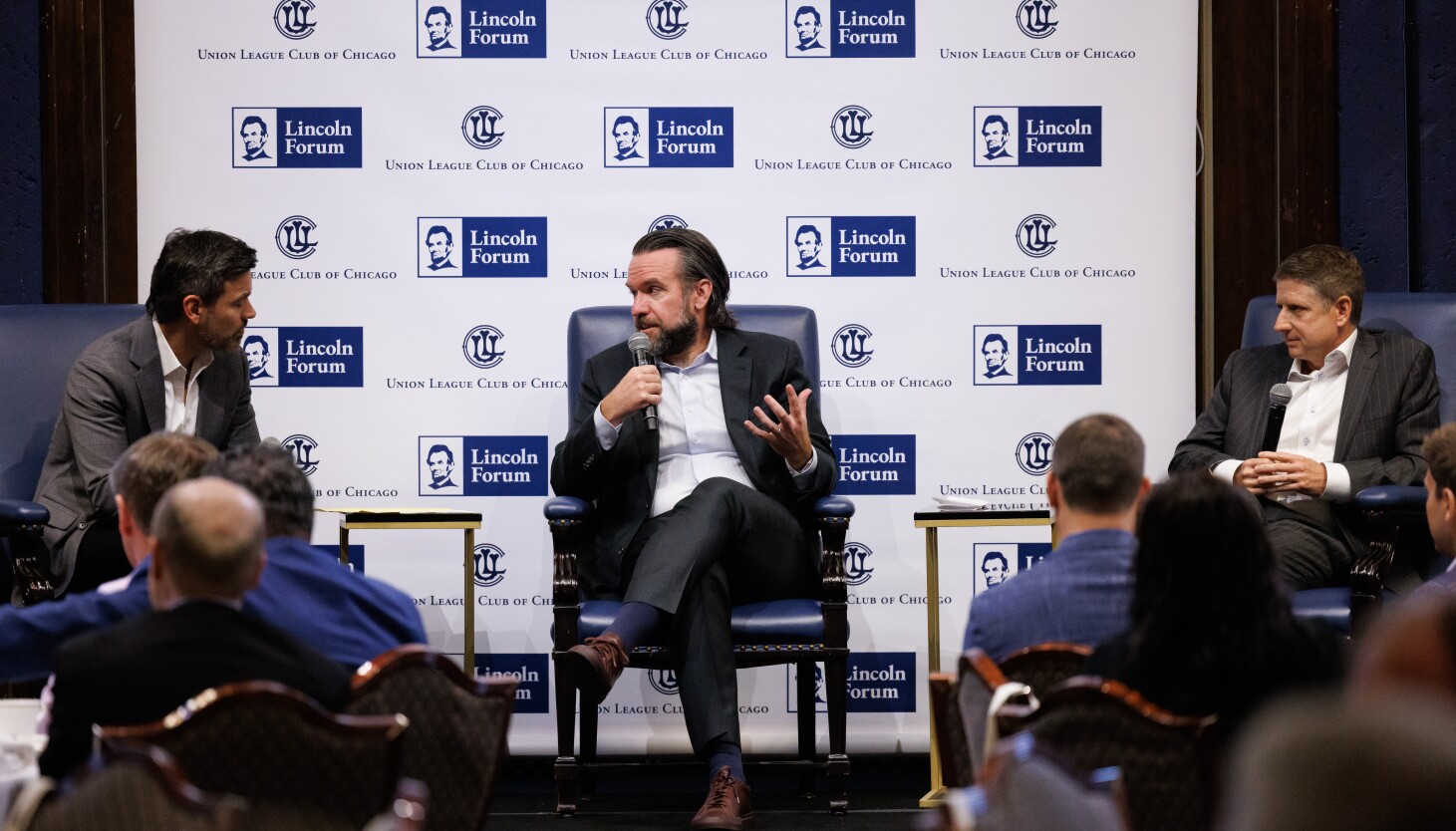Shovels could be in the ground as early as next summer on The 1901 Project — the $7 billion plan to transform the “sea of asphalt” surrounding the United Center.
The next generation of United Center ownership told attendees Wednesday at a joint Lincoln Forum and Union League Club of Chicago event that the development will likely stretch to 15 years. It was originally projected to take shape over 10 years.
Phase one will be anchored by a 6,000-seat music hall and include a parking deck featuring a 2.5-acre park on the roof.
Ownership has said the multi-billion dollar project will be privately financed, but the Reinsdorf and Wirtz families are “still in the early stages of infrastructure discussions with the City and are in preliminary discussions on the question of tax increment financing for the project,” a United Center spokesperson said in a statement to the Sun-Times.
When asked if the potential TIF funding would be used toward a new CTA Pink Line station, the spokesperson said the addition would benefit the West Side, but “those decisions ultimately lie with the CTA.”
“The TIF request represents a small portion of the overall $7 billion investment, aimed at supporting infrastructure with broad public benefits, regional significance, and a direct focus on improving the lives of those who live and work on the West Side of Chicago,” according to the United Center.
Pink Line station?
Danny Wirtz, chairman and CEO of the Chicago Blackhawks, said the owners have been “really open with the city” about a possible reconfiguration of the Pink Line, and the city has been “very open to the possibilities there.”
“That’s a conversation that’s live right now,” Wirtz said. “I think it’d be great for the city. It’d be great for us, and that’s where we can really get into thinking about how people get to and from [the United Center].”
The arena’s leaders are feeling bullish enough to cut back on parking spaces because of the growing use of rideshare services like Uber and Lyft. It’s also seen more people walking to the center, as Fulton Market becomes a residential hotbed. Having a Pink Line station would help minimize the need for huge parking lots and give fans a drop-off spot on the arena’s east side.
Michael Reinsdorf, president and CEO of the Chicago Bulls, said on a good day, the United Center’s parking is about 75% full. Occupancy on an average day is about 50%.
He said between the United Center, Malcolm X College and the Illinois Medical District, “we should figure out how to get a stop there.”
“There’s just so much going on there that it seems just logical that the city will want to do that,” Reinsdorf said.
Eyeing phase one
United Center owners anticipate phase one to be a huge catalyst for The 1901 Project. The anchor of the first construction phase is the music hall that will seat 6,000 — a rare size in Chicago.
“It’s a very unique opportunity to be able to build-to-suit for the modern touring and performance artists that we’re going to have in the venue,” Wirtz said. “Being able to design from the ground up … is a tremendous opportunity and will produce something, I think, pretty incredible for Chicago and really complement the incredible venues that exist in the city right now.”
Phase one will also include a public plaza for events and a boutique hotel. The Reinsdorf and Wirtz families’ zoning application shows plans for 1,309 hotel rooms, with up to 180 in the first phase. The parking deck and its rooftop park — that has space for children’s sports and other activities — will also be developed in phase one.
The United Center team previously said the seven phases of the project are subject to change based on market conditions. Reinsdorf pointed to the office market, which isn’t seeing much construction as hybrid work schedules continue to leave offices mostly empty.
“You want to have a really good plan. You want to have vision, but … we need to see where the world goes,” Wirtz said. “We need to see what takes off, what we might phase back, we might enhance and keep a level of flexibility for the project.”
The development is still largely in the planning phase, but once it starts phase one, construction should be complete in 22 months.
Fans can start to experience the first few phases “within a couple years,” Wirtz said.
Thousands of jobs
There’s been $1 billion invested in the United Center campus since it opened 30 years ago, according to ownership.
Phase one would create 4,000 construction jobs, 1,900 permanent jobs and $275 million in annual economic impact, ownership previously said. They also project a $796 million construction impact for phase one.
“We think it’s going to be a tremendous both job creator, and then long term, we think this is going to be a real economic engine for the West Side,” Wirtz said.
Reinsdorf said there’s a big demand for affordable housing on the West Side, and it will be a key part of the project. The zoning application includes up to 9,463 apartments, with 20% of them affordable to comply with affordable housing requirements.
“Residential is going to be a big component of what we’re doing because if you don’t build residential, then none of this is going to work,” he said. “It’s just a question of what the timing is; what comes first.”

